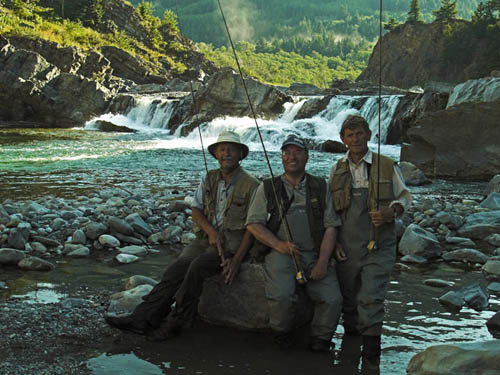
Old Dogs, New Tricks
It always disappoints me to see anglers using the same techniques and flies to catch their fish year in year out.
I suppose fishing like most activities is based on confidence and if something has worked in the past then there is no reason why it should not be successful in the future. I perceive no flaw in this reasoning but it begs the question of how do you develop and improve your angling skills. What do you do if tried and tested methods are failing? Do you carry on in hope, go home or try a new technique?
The great thing about angling in all its variations is that there are always new things to learn and challenges you can set yourself no matter for how long you have fished.
The summer of 2006 meant my sixth trip to south-west Alberta, Canada in 10 years. This adds up to a total 18 weeks of hard fishing so I suppose I should be getting the hang of it by now. This year I felt the need for a change from the usual dry fly techniques using the large buoyant flies mountain Cutthroat and Rainbow trout love so much.
Had it had become too easy or just too boring? Please don’t misinterpret this as being boastful. I can assure the reader that after only a few hours practice the fish would come to your fly just as regularly as they did for me.
I think the thought of something different was already formulating in the back of my mind even before we set out. It became more firmly established after our first day’s fishing on Cataract creek.
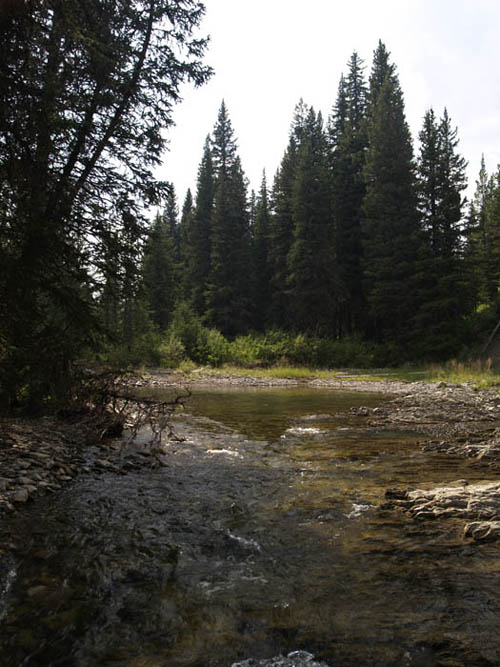
This small volume river is a tributary of the Highwood and gets its name from a series of falls in its lower reaches as it plunges down into the Highwood river valley.

Above these falls the creek meanders through open meadows and woodland with each pool containing good numbers of Eastern Brook trout.
Cataract Creek is the sort of place you take beginners to guarantee success.
My first cast with a dry size 14 Humpy brought the first fish of the day. At about 5-6 inches it represented the average size for the water while a 10-inch brookie is a specimen.

The second and third cast’s yielded similar fish so an idea soon sprung into my head. I called it speed fishing. The challenge I quickly set myself was to catch 100 trout in as short a time as possible. I don’t really know if I have ever caught anywhere near a 100 fish in a session before. I may have once on the Ram River a few years ago but perhaps it just seemed to be that many. I have also read of 100 fish flies. These are individual flies on which an angler has captured 100 fish so this naturally became a second challenge.
The self-imposed target certainly served to focus my attention and some 160 minutes later I had counted 103 fish caught and released. I caught the few extra to be sure because the hardest part of the task I discovered was counting the number of fish and I am sure I made some errors.
Concerning the 100 fish fly, I have to report that I failed. After 50 to 60 fish the Humpy was beginning to fall apart but it managed to keep catching until on the 91st fish I lost it in the branch of a fir tree. Mandatory use of barbless hooks in Alberta made catch and release very simple and speeded up my progress immensely. The session worked out at one fish every 1.5minutes and allowing for the walking between pools and releasing snagged flies makes the actual catch rate even faster.
Though I was quite pleased with this challenge I don’t think I will ever bother to try it again. I had learned hardly anything new. It’s the things we do and learn from is what really counts.
The one river I always feel compelled to fish is the Castle in Southwest Alberta. This is as wild a river as they come with a good head of Cutthroat, rainbow and Bull trout together with excellent Rocky mountain whitefish.
After leaving the mountains the Castle cascades through the forested foothills before plunging through a narrow gorge known locally as the Castle canyon.
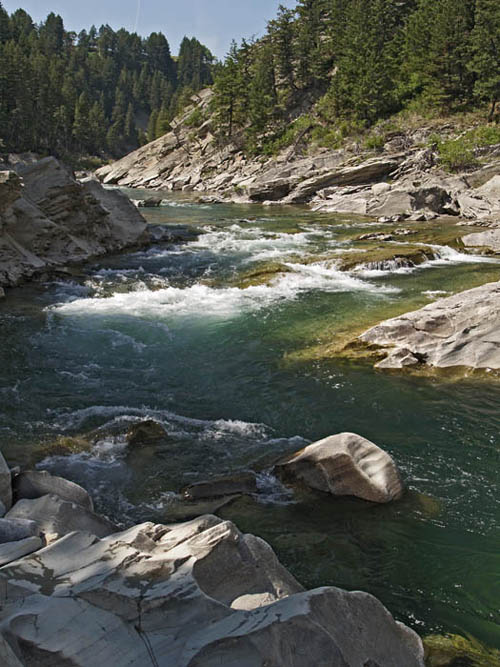
The river here has formed extremely deep and turbulent pools. The fabulous clarity of the water enables you to see the fish at what appear to be 10 to 15 feet beneath the surface. On a good day when there is a fly hatch these fish will rise to dry fly but if not then the only way to catch them is to get the fly down at their level. This then became another challenge.

Given comparatively still water or long pools then fishing a heavily weighted nymph at such depths is not difficult. All you need is long leaders and time to let the flies sink.
The Castle does not fit into either of the above categories. It is powerful fast flowing Mountain River and a fly can sweep through a pool before it has sunk even 2 to 3 feet. Did I manage to solve the problem? Well the simple answer is that I did, but only partly.
The first response was to use very heavily weighted flies. Size 8 grub hooks dressed with two or three large tungsten beads helped but they still needed time to sink and I was amazed at how easily the current swept them around like sunken leaves.
I suppose I could have added lead shot to the line but felt that to be cheating and I didn’t have any anyway. The second strategy was to use extremely long leaders so the fly line does not stop the flies sinking. I must have had them at least 15 feet long which makes life very difficult considering you are not casting in the normal manner.
You somehow had to role the flies over the top of the rod. The weight of the nymphs helped. There was nothing fancy in this technique.
After some lengthy experimentation, two methods were adopted which successfully produced fish.
The first was to cast or drop the flies well upstream of the pool to be fished. Actually into the shallower rapids so the flies were already near the bottom when they entered the main pool.
As soon as the flies reached the turbulent water at the head of the pool if one stands still then the force of the current would soon lift the flies. What I had to do was walk/run/scramble downstream as fast as or even faster than the flies themselves.
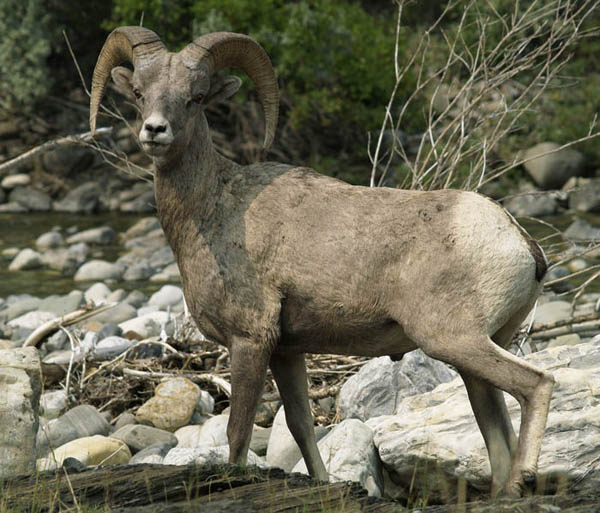
In some places this was impossible but where you could do so it was possible to get the flies really deep and more importantly catch fish.
Another difficulty was the frequent snagging of the flies in the shallower water. I would not recommend this strategy to anyone not light-footed and confident on their feet and you have to feel for the takes while negotiating a way along the pool. In many cases, I still could not get the fly to the fish but it worked well enough to encourage me to persevere.
The technique, or should I say style, did produce some lovely fish including 3 to 4lb Rocky mountain whitefish.
I used a dropper about 12 inches above the tungsten bead and it was this which caught the bulk of the fish. The pattern would be no surprise to those who know me. It was the little Whitehead nymph which you can find in our fly tying section (Parf’s Peeing Caddis). This is my definite desert island pattern.
The other technique which I did try but worked with much less success was to let the flies sink as deeply as possible in the deep back eddies which always seem to form on the edges of deep rocky pools. When the flies had reached sufficient depth then using the rod tip I dragged the flies out into the main current and after a couple of seconds then lifted the rod if the current had not done it for you. It was the lifting of the rod tip which had the most effect, a sort of deep nymph induced take.
I quickly become fascinated by the challenge of this style of fishing to the extent I did not fish the dry fly on a river for the rest of the trip.
The trials on the Castle River progressed into lesson three which took place over a two-day session on a neighbouring river called the Oldman.

Northwest of the town of Pincher Creek is a long narrow mountain range called the Livingstone Ranges. These rise abruptly and dramatically straight up from the prairies and present a seemingly impenetrable wall when viewed from the east. Rising to 10,000 ft. the mountains stretch in a north-south direction.
At first, the Oldman river flows parallel to these mountains on their western side but at one point suddenly turns eastwards and has cut a gorge straight through the Livingston range.
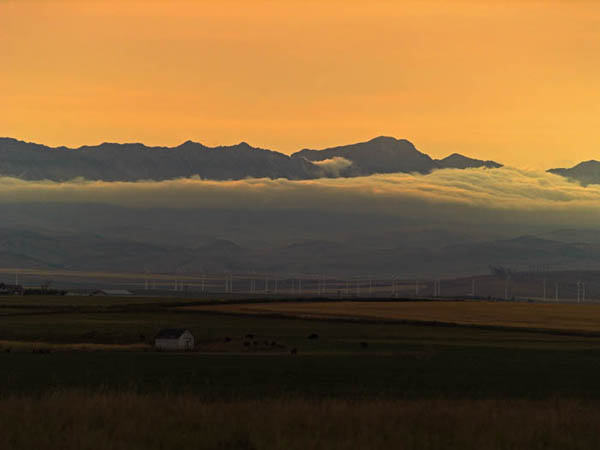
Known as the Livingstone gap the river for a kilometre or so has flows over a series of low waterfalls and cataracts. This water I thought would be ideal for further deep nymph practice but this time it was to nymph fish with lures.
I have long been a fan of the Woolly Bugger fly. Few self-respecting Canadian mountain fishermen would hit the rivers without a woolly bugger in their fly box. They work equally as well in the lakes and aggressive Rainbows love them. Woolly buggers can devastate in the UK too and I can think of no better pattern if it is a big Brown trout you are after. In fact, it amazes me they are so neglected in the UK when so many other North American patterns have been freely adopted. Anyway, I had read that woolly buggers not only catch fish when fished streamer style but would do so when fished dead drift like a nymph. Until last summer I never had the confidence or conviction to give it a go but the Oldman River changed that.
Bull trout are a type of Char which are native to the Rocky Mountains. They are to the Mountain Rivers of Canada what Pike are to UK waters. Highly aggressive, Bull trout feed exclusively on fish and this makes them very susceptible to over harvest by anglers. Several years ago legislation was introduced to protect this wonderful fish and numbers are slowly recovering. Bull trout can grow large and up into double figure weights. I had been told that Oldman was a good spot to try for Bulls so after a couple of hours of nymph fishing for Cutthroat, Rainbows and Rockies it was time to try the woolly bugger.
In no time I was fortunate to get one in the tail of a large pool fishing the fly as you would for Salmon, in letting the fly swing around in the current.

It was not a big fish at around 2 lb. but what excited me was its big brother (or sister) which decided to keep it company as I brought it in to the side.
I wanted that hog badly but despite all my efforts I failed. It was time for a re-think.
Looking into the pool while I had a drink I could see to my surprise about 6 Bulls from 2 to 6lb near the river bed. They were about 10 ft down so the difficulty presented was a repeat of that on the Castle.
No problem I thought. I decided to leave on the Woolly Bugger and dead drift it past them after which a fish would be mine.
Of course I was wrong but due to my position and the water clarity it was a great situation to see everything that was happening and evaluate the effectiveness of my trials.
Eventually after about an hour or so I got three of them though sadly not the big one.
The answer was to cast upstream to give the fly chance to sink, follow it down as on the Castle and as it past the fish lift the rod quite violently. They could not resist it. The induced lure technique. Lesson learned.
Lastly, to visit the Rockies and not hike up to fish an exquisite alpine lake would be terrible mistake.
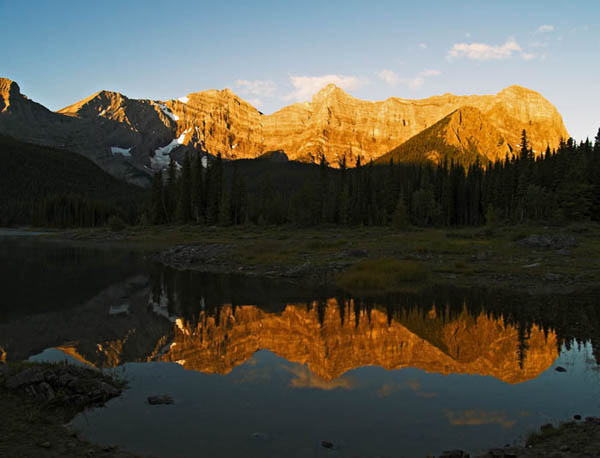
Dai and I tried three new ones this year. Fortress Lake, Window Mountain and the pick of the three Smut’s lakes.
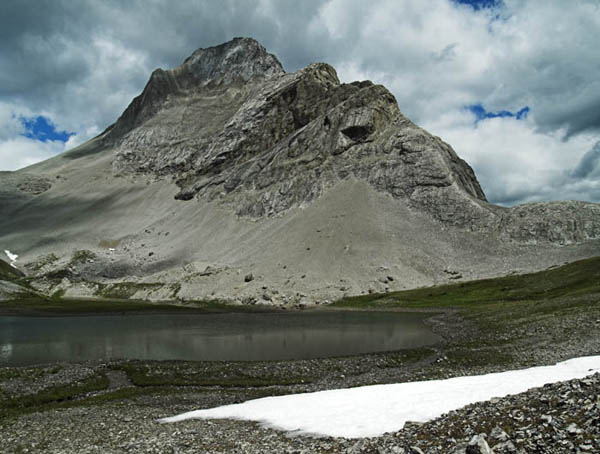
Even if the fishing does not work out then scenery and possible wildlife more than compensates.
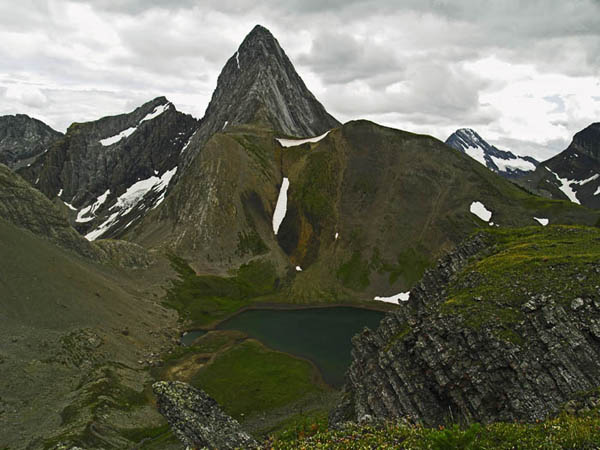

I have found these high alpine lake fish do not respond well to traditional cast and walk with bushy flies so popular in Scotland and Wales.
The answer was quite simple effective. Put on a good floating fly such as a Humpy cast it out and just wait. Cruising fish take it as sweet as a nut.
We may be old dogs, but are still learning tricks.



